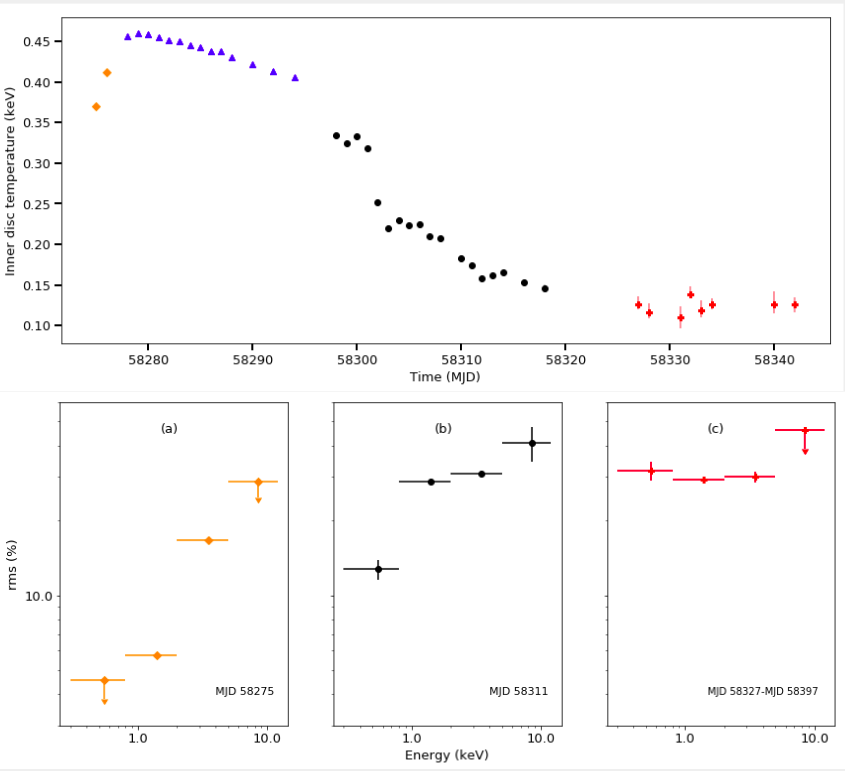NICER / ISS Science Nugget
for July 23, 2020
NICER Finds a Black Hole in MAXI J1727-203
Low-mass X-ray binaries (LMXBs) are orbiting systems that emit X-rays in which one of the components is a black hole (BH) or a neutron star (NS) and the other component is a low-mass star. MAXI J1727-203 is an LMXB discovered by JAXA's ISS payload MAXI in June 2018, at the start of a roughly 2-month-long outburst. We carried out the first study of the spectral and timing properties of MAXI J1727-203 using NICER data. Thanks to NICER's scheduling agility that enabled excellent sampling in time, we were able to study the evolution of the accretion disc across the outburst. We found that the disc temperature reached a maximum of ~0.45 keV (or approximately 5 million degrees Kelvin), and then it cooled down to ~0.1 keV, at which point NICER could no longer detect it. Earlier X-ray observatories could not detect the disc during most of the outburst given these relatively low temperatures. With NICER's low-energy response and timing capability, we were also able to study the characteristics of the sub-second variability in X-ray emission down to photon energies as low as 0.3 keV. Taken together, the results enabled us to conclude that the compact object in the system is a black hole. This work, led by graduate student K. Alabarta of Southampton Univ. in the UK, was accepted this week for peer-reviewed publication in the Monthly Notices of the Royal Astronomical Society.

Figure: Top panel: evolution of the disc temperature. Bottom panel: evolution of the X-ray variability (in units of fractional rms amplitude) with energy. Colors represent different intervals over the outburst
<< Previous
Main Index
Next >>